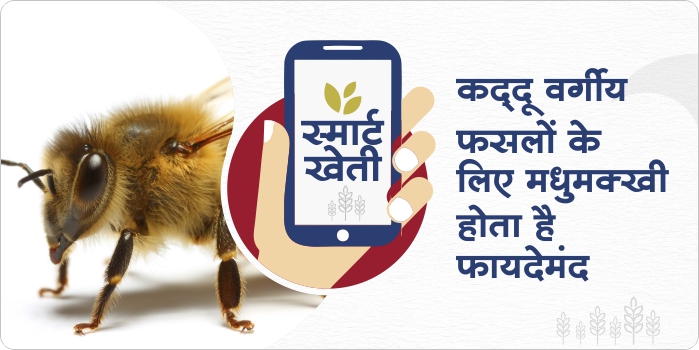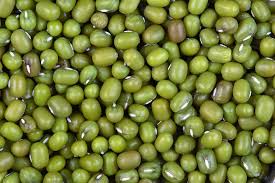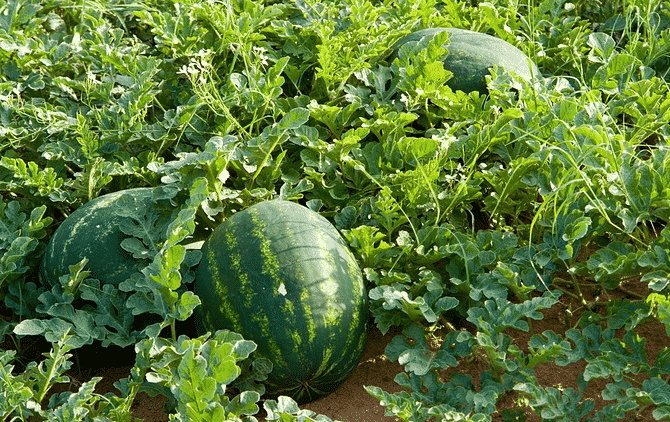- Cucurbit crops are planted in large quantities as summer crops.
- Due to change in weather and temperature, after flowering in cucurbits crops, there is a lot of problem during the development of fruits.
- Honeybees play a very important role in natural pollination in cucurbits.
- In the cucurbit crop, through honeybees, pollination is done up to 80%.
- A large number of hairs are found in the body of honeybees, which pick up pollen particles. After this, they collect pollen and transport it to the female flowers.
- Honeybees do not cause any harm to the crops.
- The action of fertilization is completed after the above mentioned action. After this, the process, conversion starts from flower to fruit in the plant.
How to do soil treatment without using chemicals?
There are mainly two ways of doing soil treatment using chemicals, which are as follows:
Soil solarization– Due to strong sunlight and high temperature, summer is the best time for soil solarization. In this process, the seed-plots (seedbeds) are covered by a transparent sheet of plastic for one to two months. The edges of the plastic sheet should be covered with soil so that air cannot enter inside. This process increases the temperature inside the plastic film, which destroy the harmful pests, the spores of diseases and the seeds of some weeds present in the soil. The Soil solarization reduces soilborne diseases and pests in the seedbeds. In this way, you can reduce the pests in the soil without using any kind of chemicals.
Organic method –
In this method, the soil is treated with fungicide Trichoderma viridi (Sanjivani / Combate) and insecticide Bueveria basiana (Bave Curb). Take 8-10 tons of good rotten cow dung and mix 2 kg of Sanjivani / Combate and Bave Curb and maintain moisture in the mixture. This mixture should not get direct sunlight. So, do this process under a shade or tree. Maintain the moisture by spraying some water on the mixture whenever needed. After 4-5 days, the colour of the manure becomes light green due to the germination of the fungus. After that, the fertilizer is turned upside down so that the fungus can be contained in the bottom layer also. After 7 to 10 days, this mixture should be scattered in the field. By doing this, the harmful pests present in the land, their eggs, pupa and spores of fungi can be destroyed. The soil enrichment kit by Gramophone contains all the biological products that improve soil structure, increase the number of beneficial organisms and availability of plant nutrients, destroy harmful fungi, grow roots, increase rhizobium in roots and increase nitrogen fixation.
ShareIncrease yield of Summer Moong through land and seed treatment
Soil treatment:
- land treatment is very important before starting the agricultural process in summer moong. It helps in destroying harmful pests and fungi present in the soil.
- Mix 4 kg of composting bacteria and 1 kg of Trichoderma Viridi in 6-8 tons FYM and spread it over an acre field.
Seed treatment:
- seed treatment is also very important before starting the agricultural process in summer moong. It helps in destroying harmful fungi and sucking pests.
Mung seeds can be treated with either 2.5 grams of carboxin 37.5% + Thiram 37.5% DS per kg seed or
- They can also be treated using 5-10 grams Trichoderma viridi / Pseudomonas fluorescence and 5 ml imidacloprid 48 FS per kg seed.
farmers can take more production in melon crops by increasing the number of flowers
- We can promote flowering and take high yield through the given below products.
- Spray Homobrassinolide 0.04% W/w 100-120 ml/acre.
- Apply seaweed extract 180-200 ml/acre.
- Use multi-Micro nutrients 300 Gm/acre.
- The effect of this spraying remains on the plant for 80 days.




